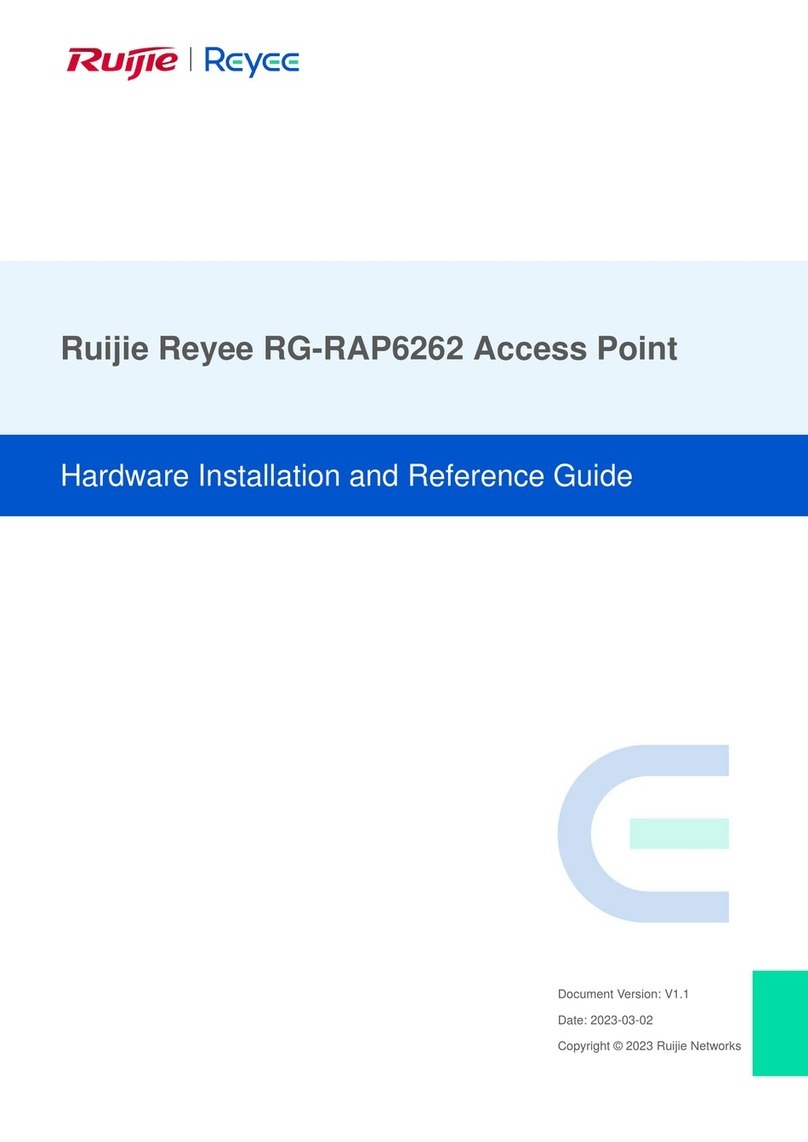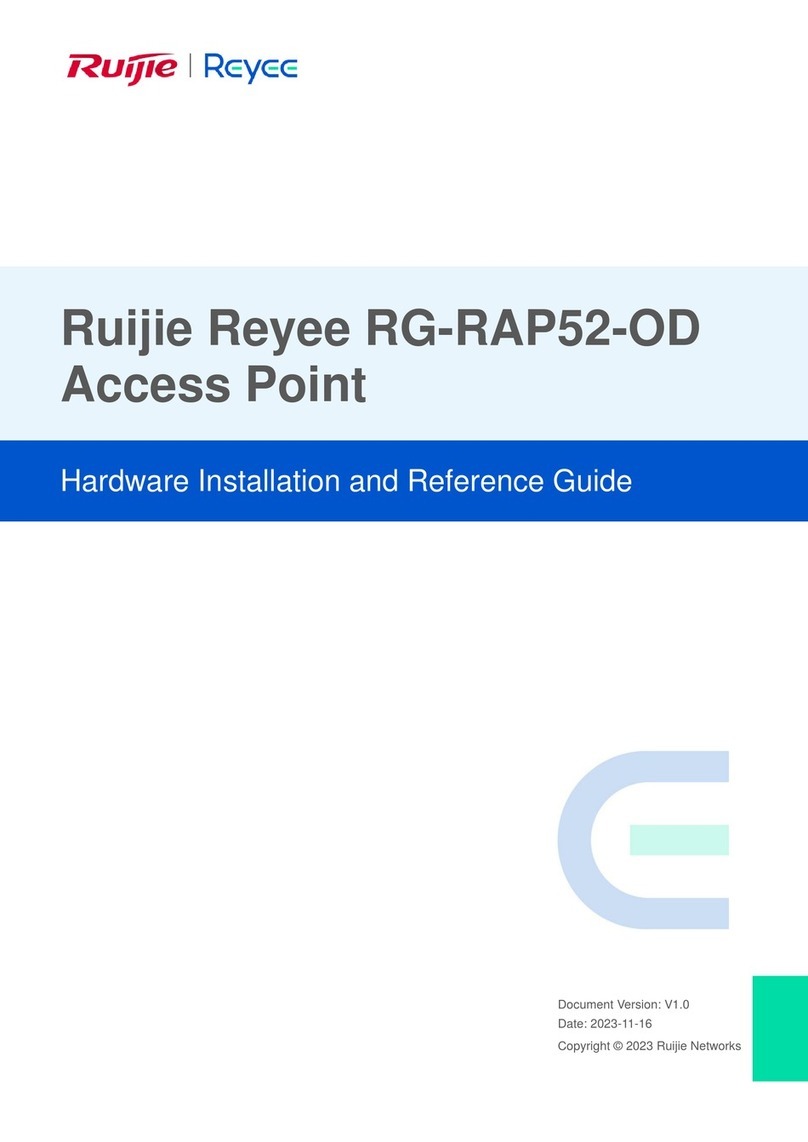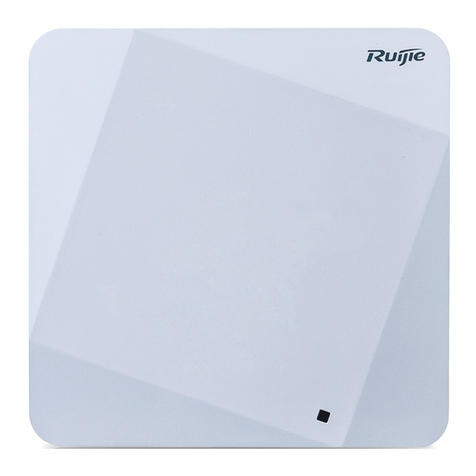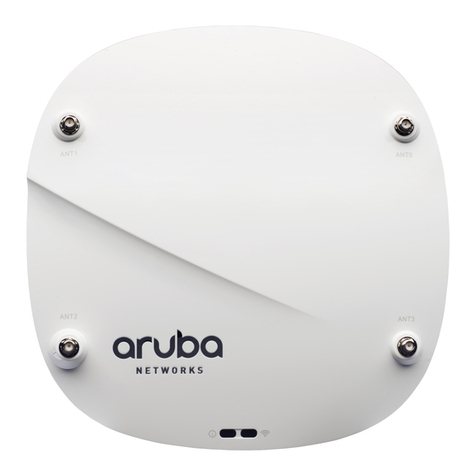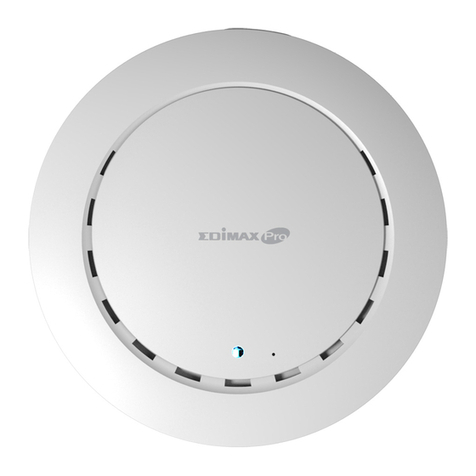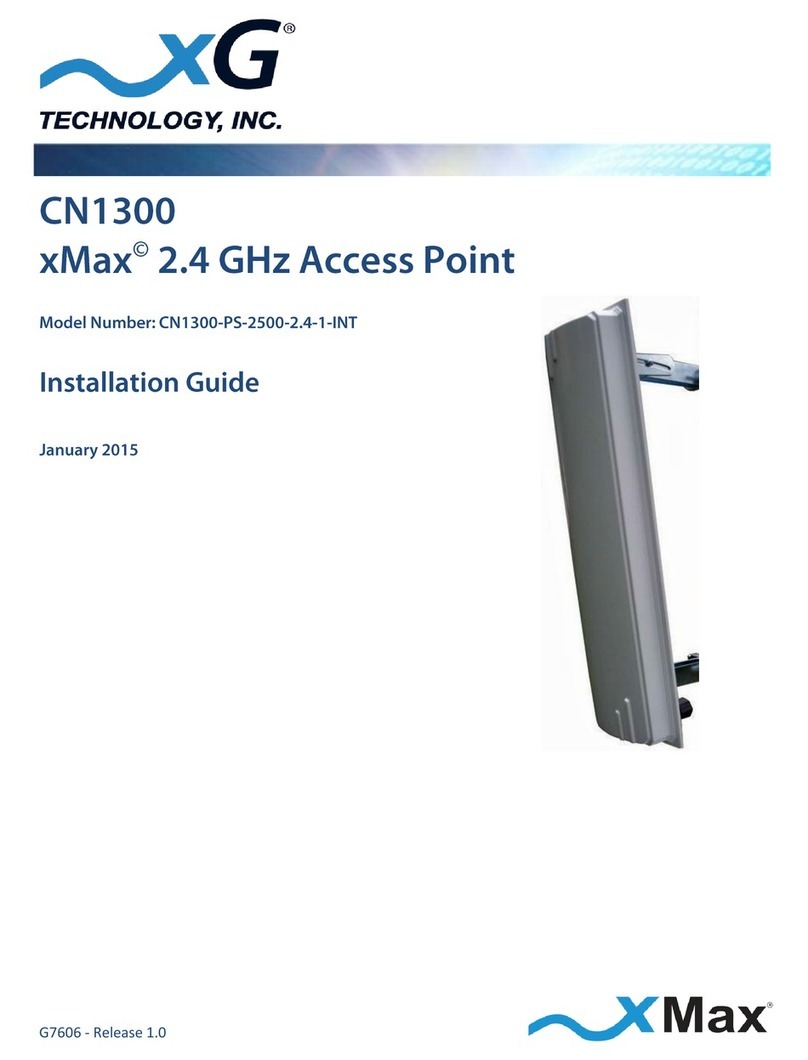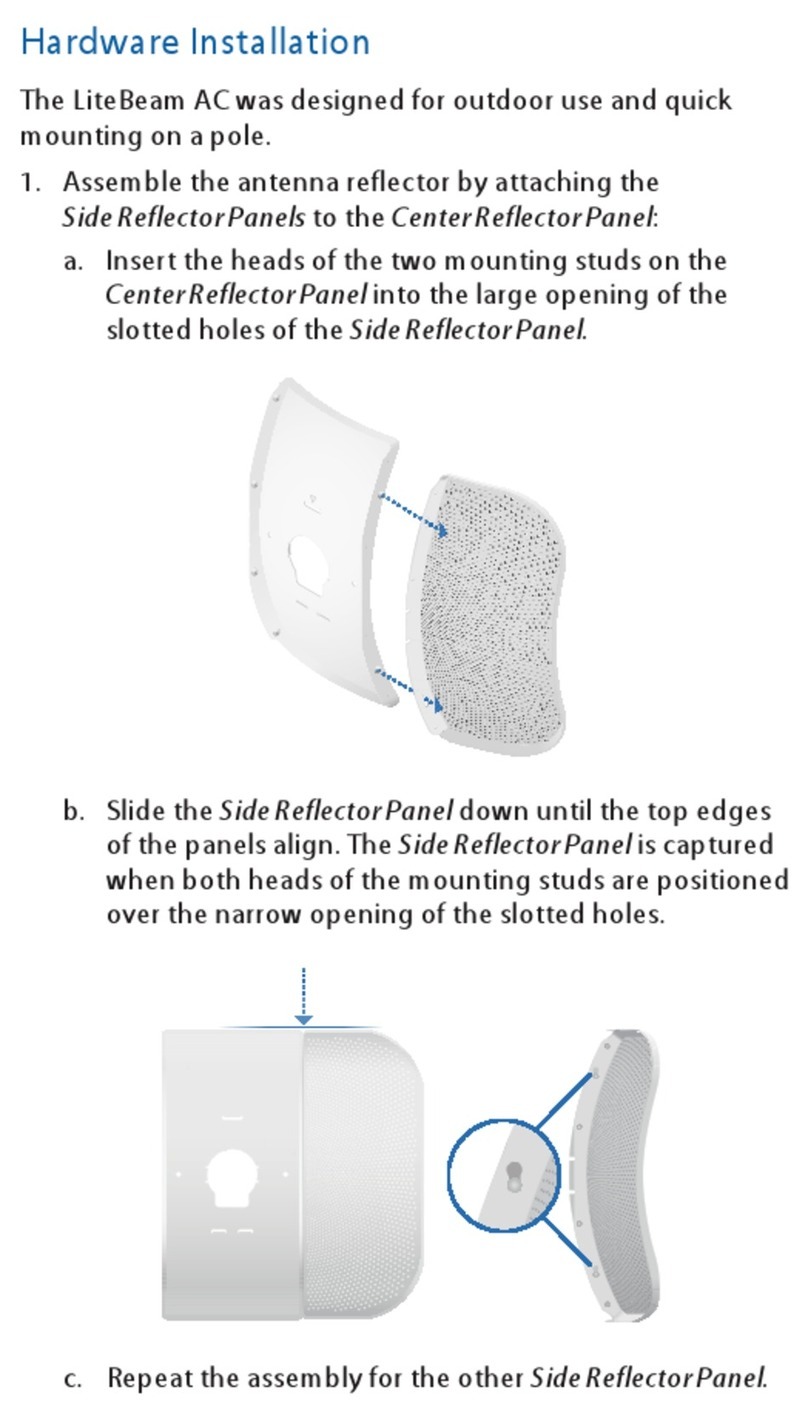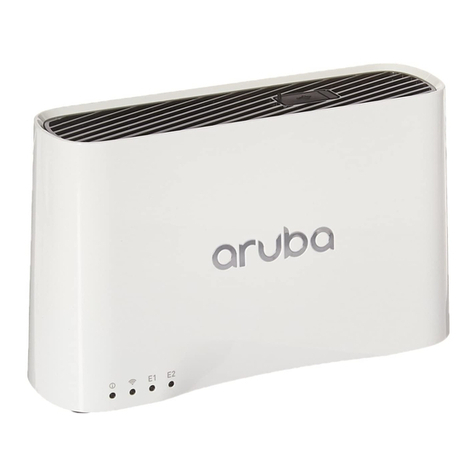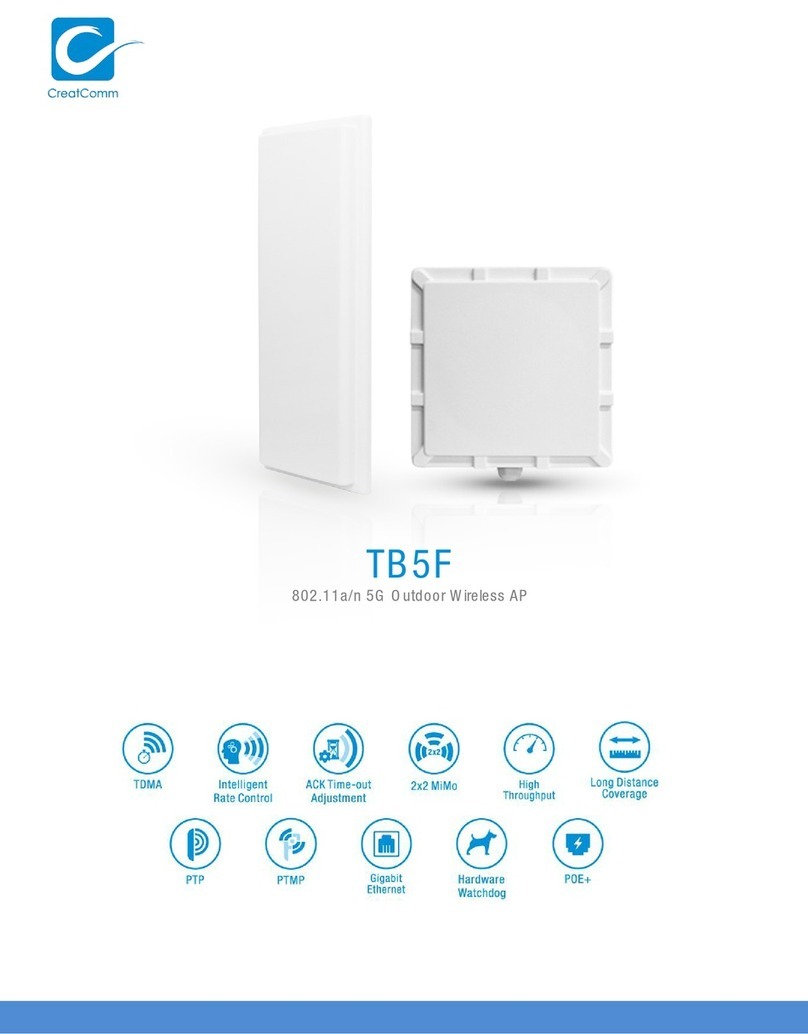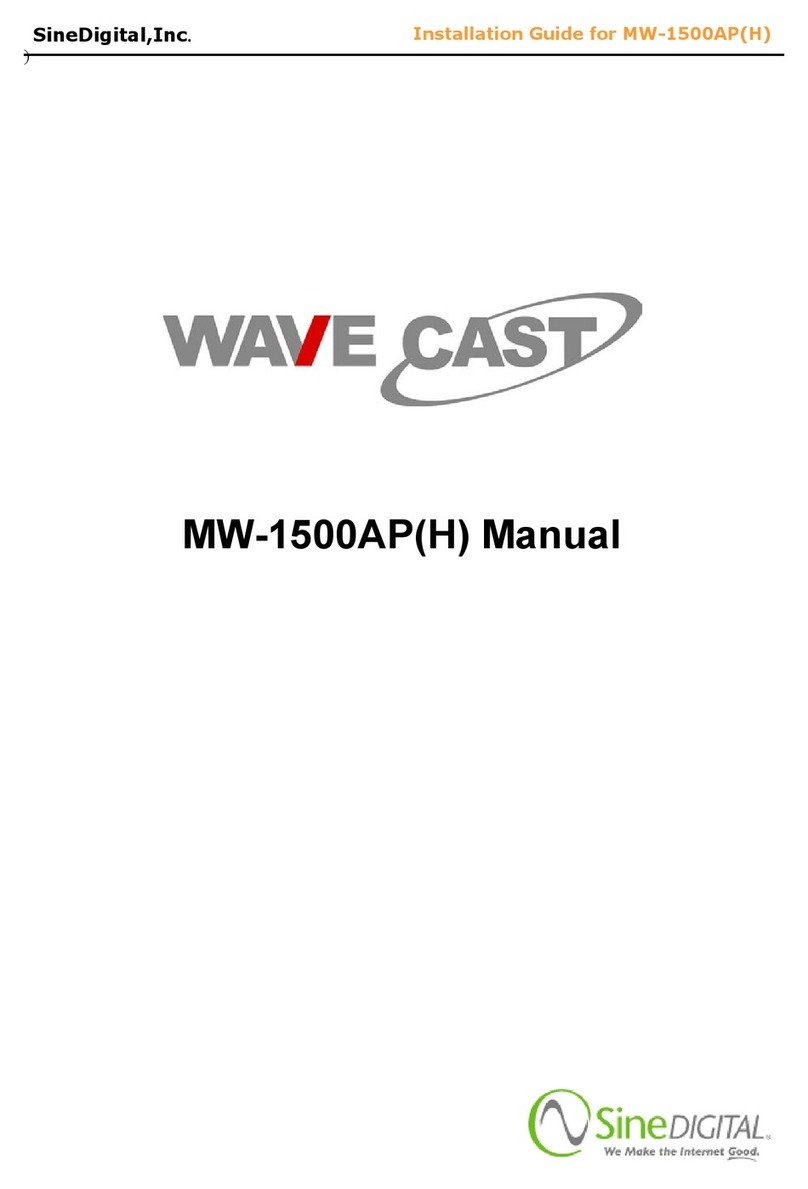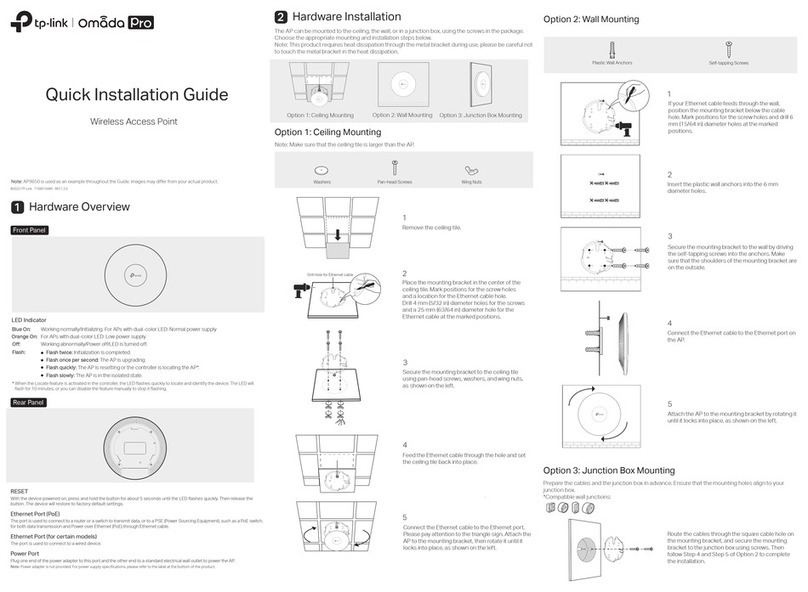Ruijie RG-AP880-AR Installation and operating manual
Other Ruijie Wireless Access Point manuals

Ruijie
Ruijie Reyee RG-RAP1260 Installation and operating manual
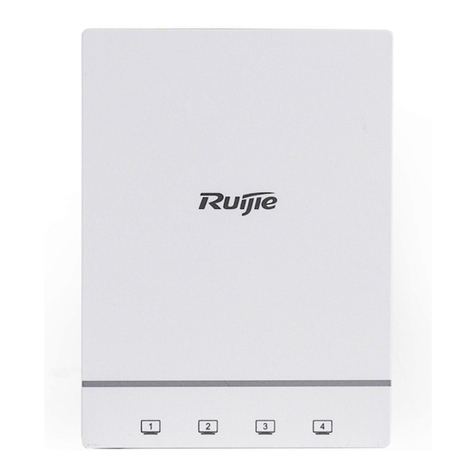
Ruijie
Ruijie RG-WLAN Series Installation manual

Ruijie
Ruijie RG-WLAN Series User manual
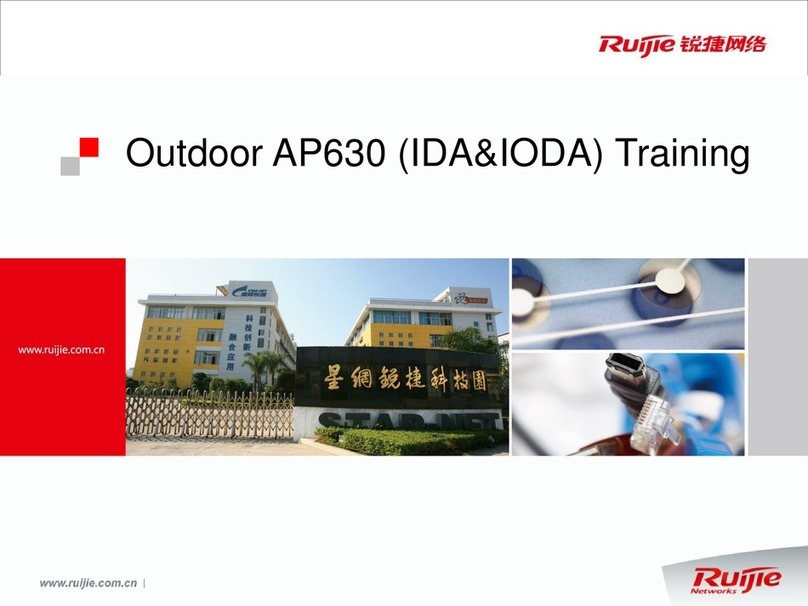
Ruijie
Ruijie AP630 Series Installation guide
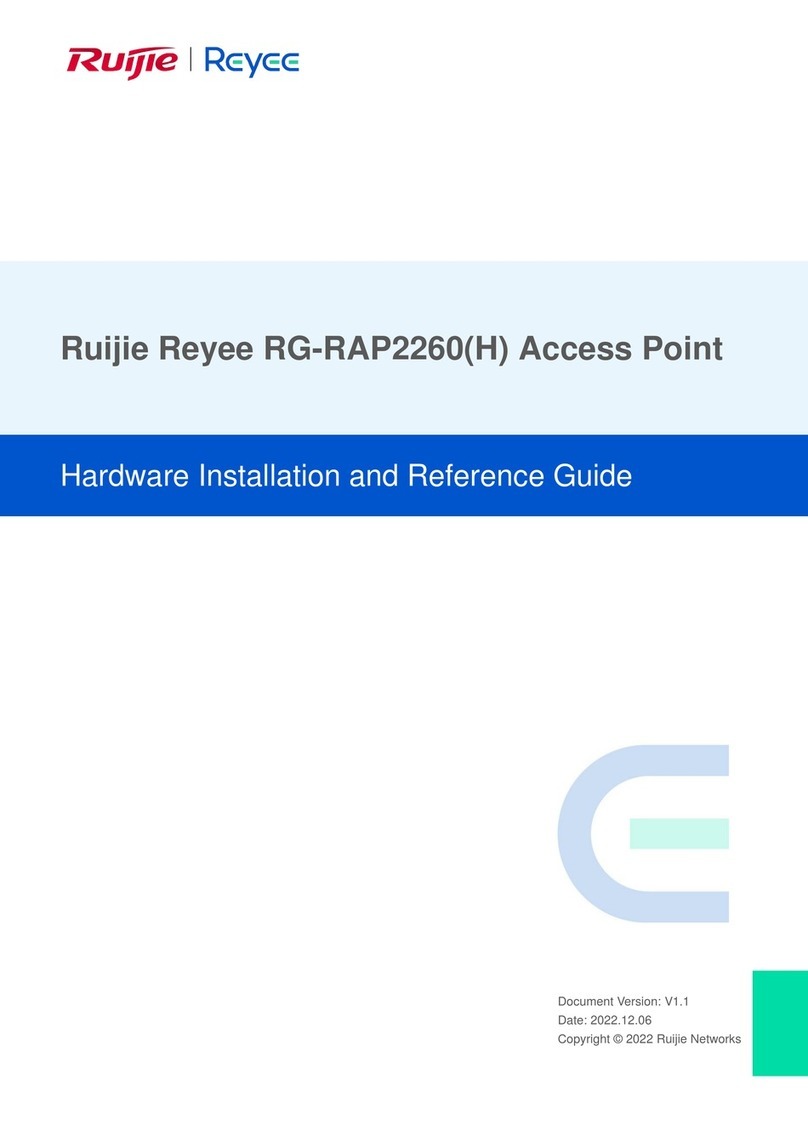
Ruijie
Ruijie Reyee RG-RAP2260 Installation and operating manual
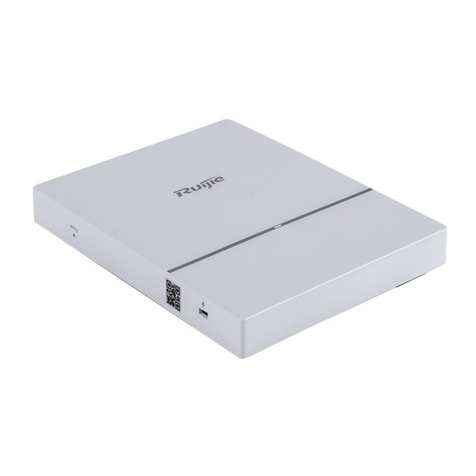
Ruijie
Ruijie RG-AP820-L(V2) Series Installation and operating manual

Ruijie
Ruijie RG-AP680-I Installation and operating manual
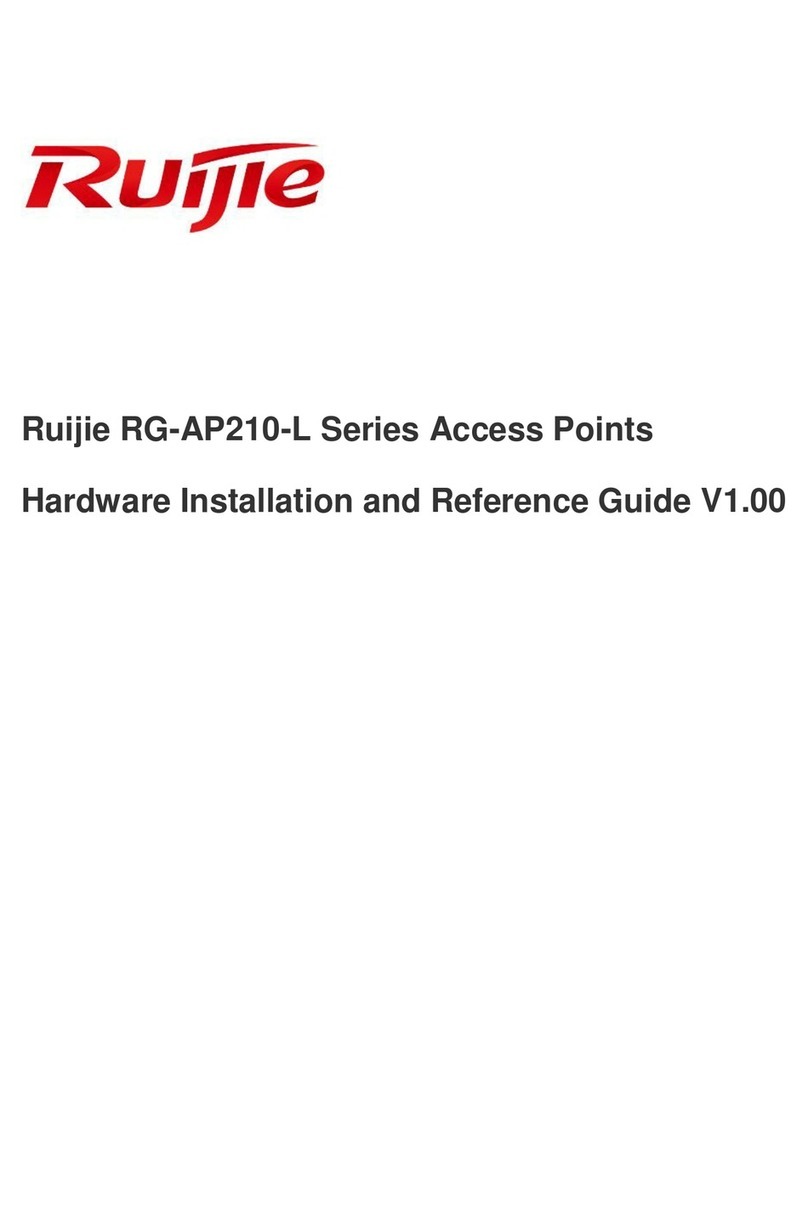
Ruijie
Ruijie RG-AP210-L Series Installation and operating manual

Ruijie
Ruijie RG-AP740-I Series Installation and operating manual
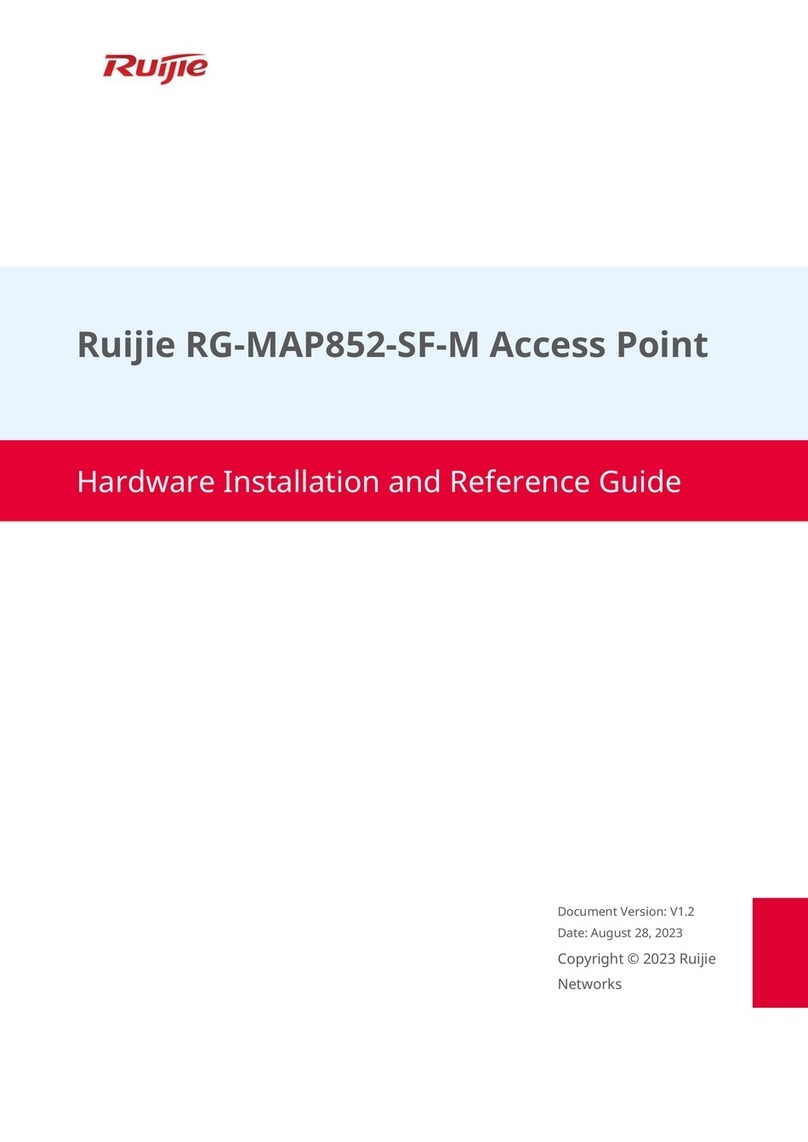
Ruijie
Ruijie RG-MAP852-SF-M Installation and operating manual
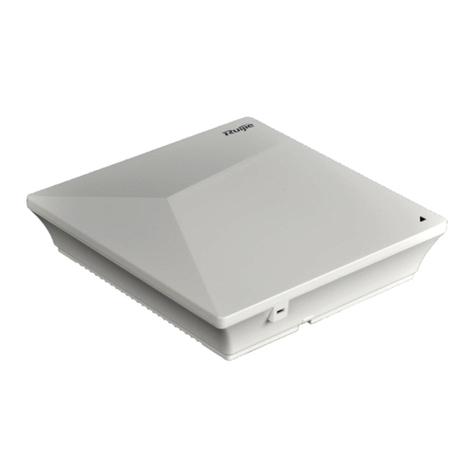
Ruijie
Ruijie RG-AP530-I V2 Series Installation and operating manual
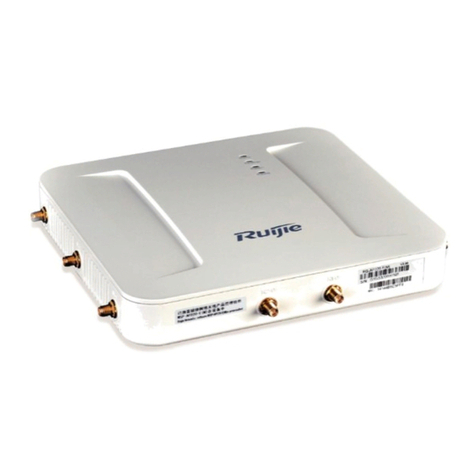
Ruijie
Ruijie RG-AP220 Series User manual
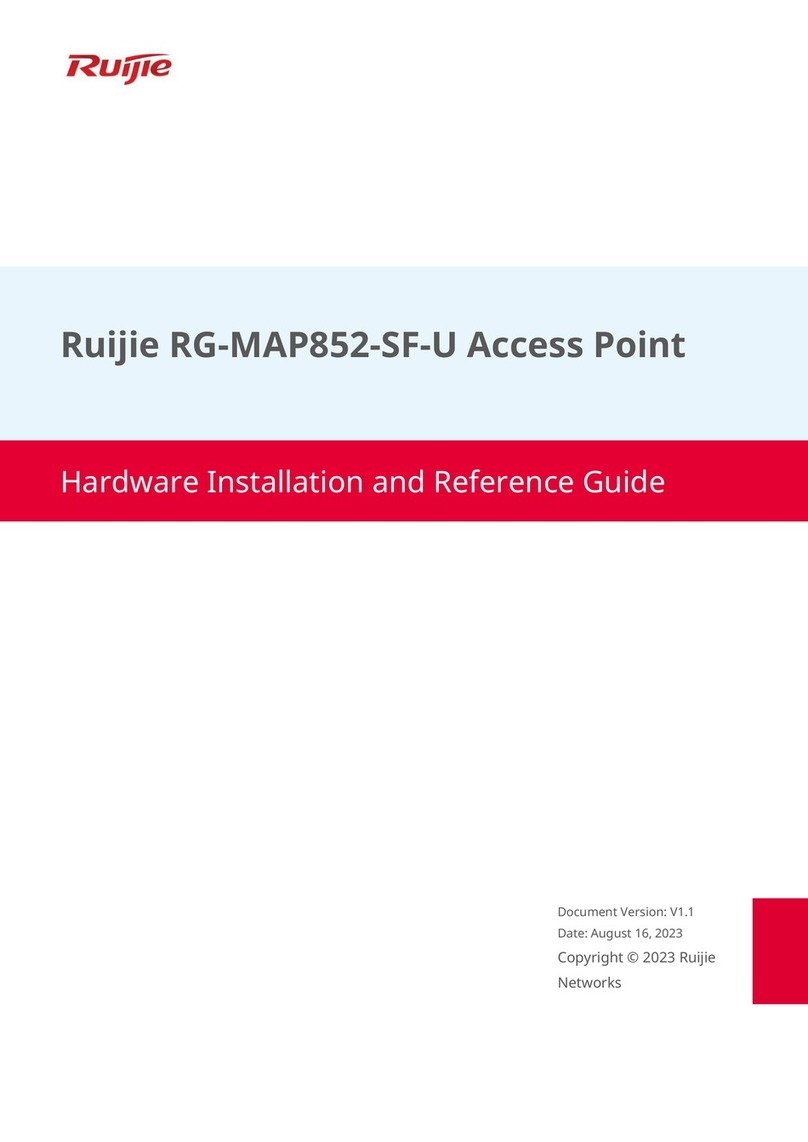
Ruijie
Ruijie RG-MAP852-SF-U Installation and operating manual

Ruijie
Ruijie Reyee Series Dimensions

Ruijie
Ruijie RG-AP680-A Installation and operating manual
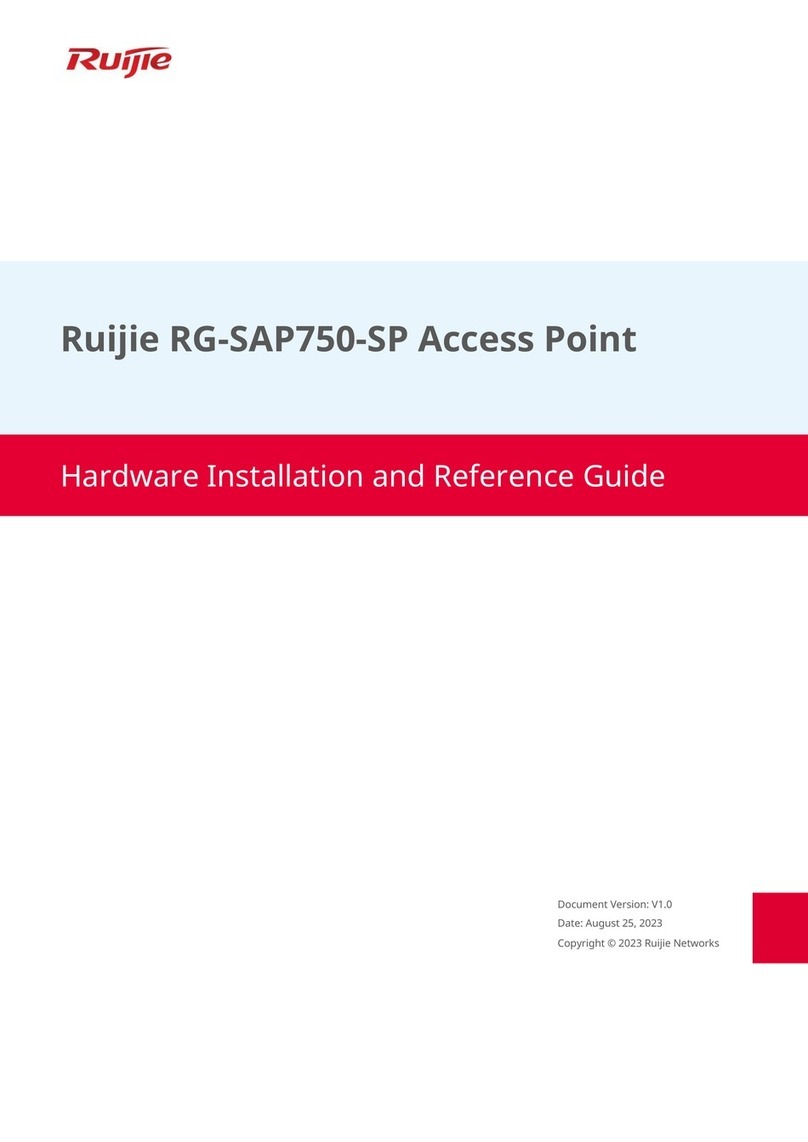
Ruijie
Ruijie RG-SAP750-SP Installation and operating manual
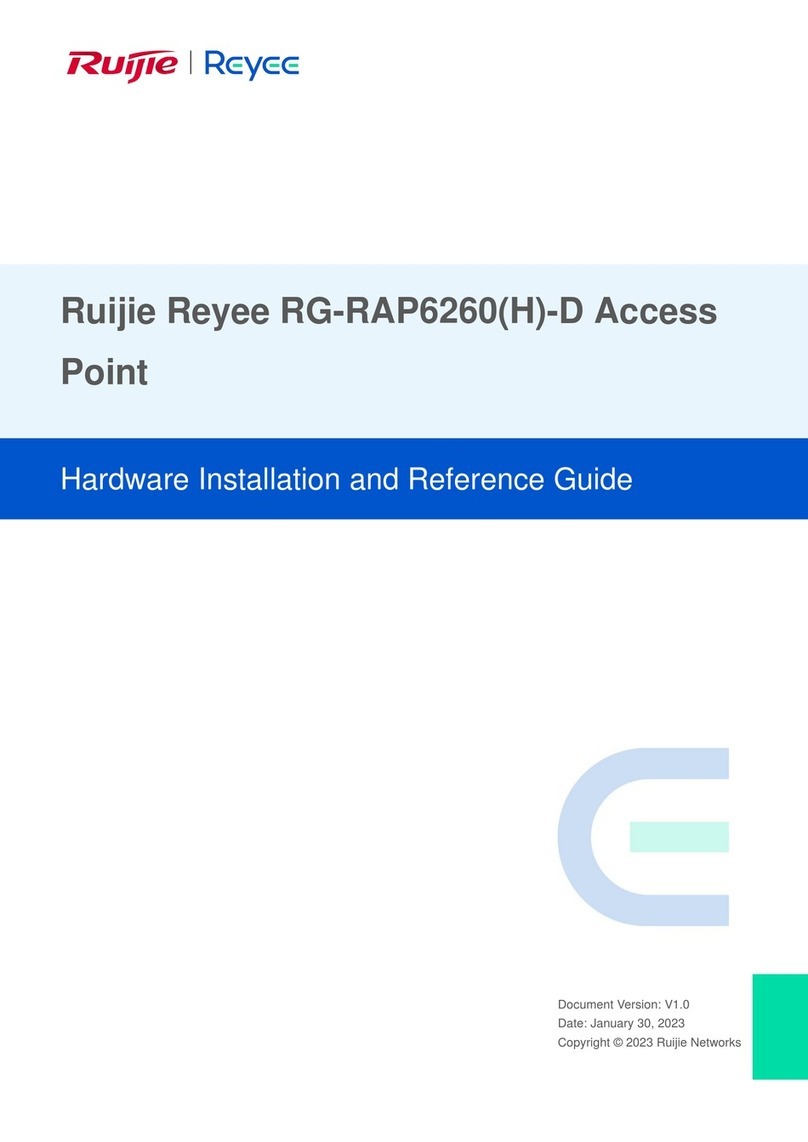
Ruijie
Ruijie Reyee RAP6260-D Installation and operating manual
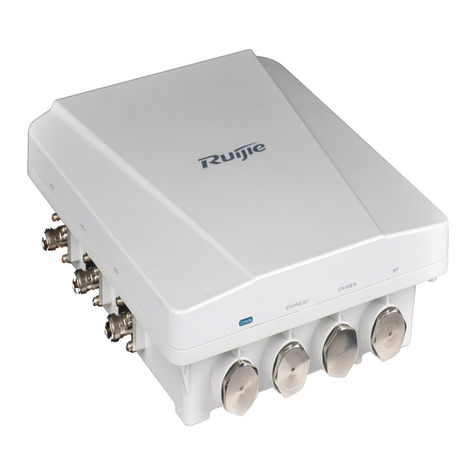
Ruijie
Ruijie RG-AP630 Directional Installation and operating manual
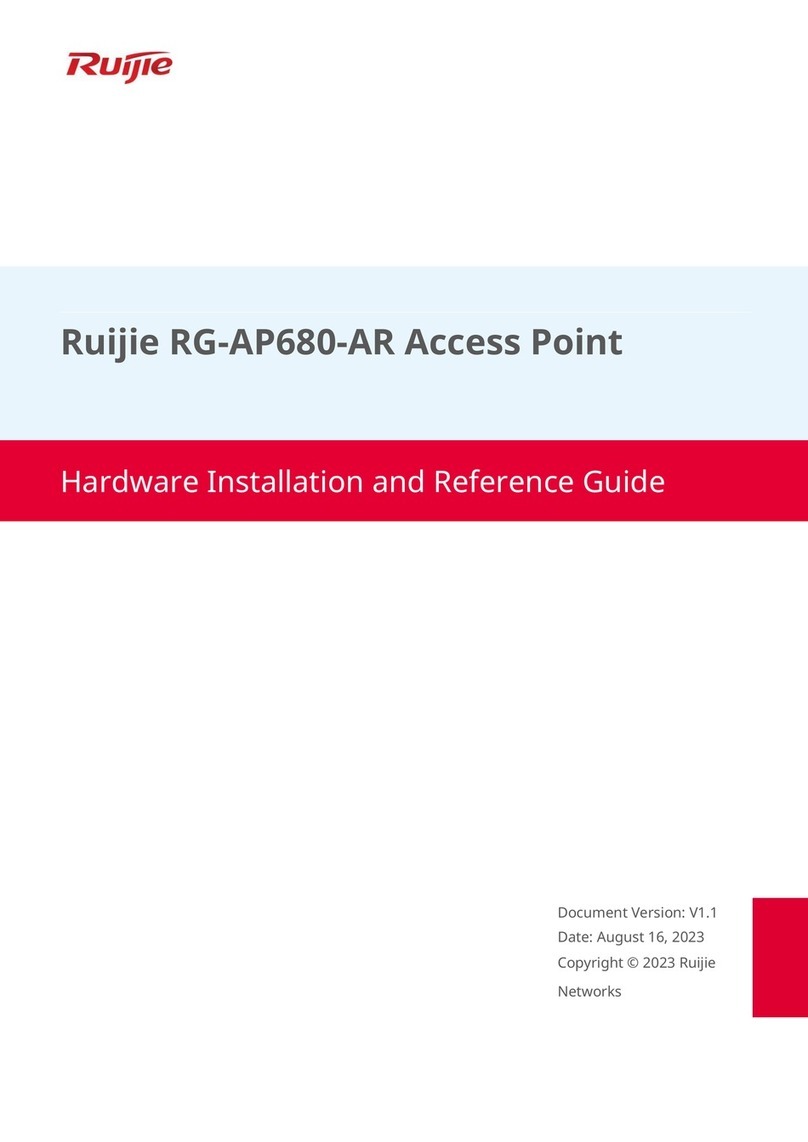
Ruijie
Ruijie RG-AP680-AR Installation and operating manual

Ruijie
Ruijie HA3515-DG Installation and operating manual
